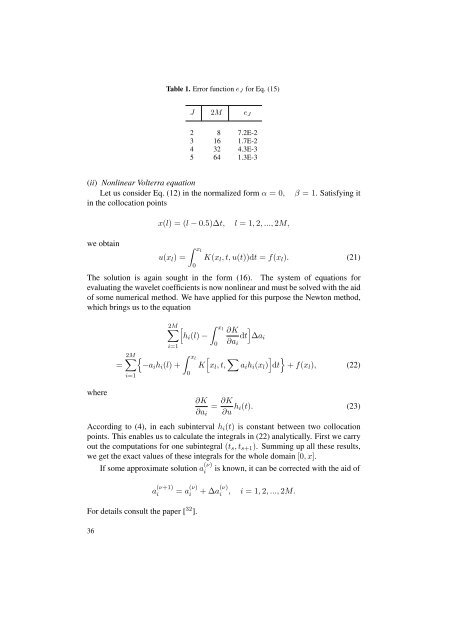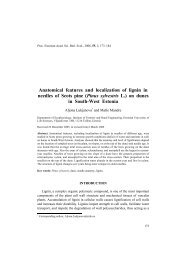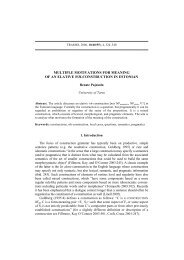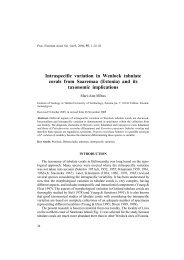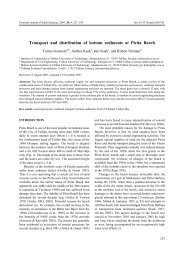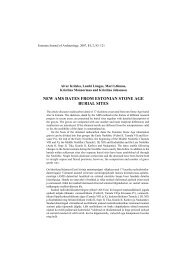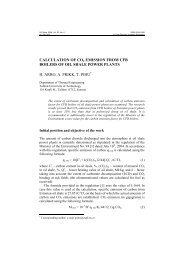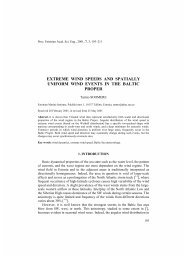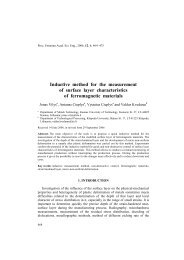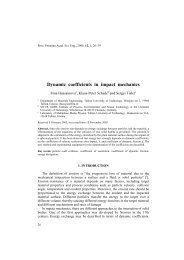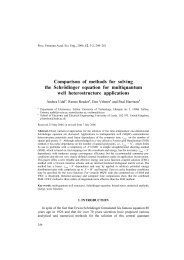Application of the Haar wavelet transform to solving integral and ...
Application of the Haar wavelet transform to solving integral and ...
Application of the Haar wavelet transform to solving integral and ...
Create successful ePaper yourself
Turn your PDF publications into a flip-book with our unique Google optimized e-Paper software.
Table 1. Error function e J for Eq. (15)<br />
J 2M e J<br />
2 8 7.2E-2<br />
3 16 1.7E-2<br />
4 32 4.3E-3<br />
5 64 1.3E-3<br />
(ii) Nonlinear Volterra equation<br />
Let us consider Eq. (12) in <strong>the</strong> normalized form α = 0,<br />
in <strong>the</strong> collocation points<br />
β = 1. Satisfying it<br />
we obtain<br />
x(l) = (l − 0.5)∆t, l = 1, 2, ..., 2M,<br />
u(x l ) =<br />
∫ xl<br />
0<br />
K(x l , t, u(t))dt = f(x l ). (21)<br />
The solution is again sought in <strong>the</strong> form (16). The system <strong>of</strong> equations for<br />
evaluating <strong>the</strong> <strong>wavelet</strong> coefficients is now nonlinear <strong>and</strong> must be solved with <strong>the</strong> aid<br />
<strong>of</strong> some numerical method. We have applied for this purpose <strong>the</strong> New<strong>to</strong>n method,<br />
which brings us <strong>to</strong> <strong>the</strong> equation<br />
=<br />
2M∑<br />
i=1<br />
2M∑<br />
i=1<br />
{<br />
−a i h i (l) +<br />
[<br />
h i (l) −<br />
∫ xl<br />
0<br />
∫ xl<br />
0<br />
∂K<br />
]<br />
dt ∆a i<br />
∂a i<br />
[<br />
K x l , t, ∑ ] }<br />
a i h i (x l ) dt + f(x l ), (22)<br />
where<br />
∂K<br />
∂a i<br />
= ∂K<br />
∂u h i(t). (23)<br />
According <strong>to</strong> (4), in each subinterval h i (t) is constant between two collocation<br />
points. This enables us <strong>to</strong> calculate <strong>the</strong> <strong>integral</strong>s in (22) analytically. First we carry<br />
out <strong>the</strong> computations for one sub<strong>integral</strong> (t s , t s+1 ). Summing up all <strong>the</strong>se results,<br />
we get <strong>the</strong> exact values <strong>of</strong> <strong>the</strong>se <strong>integral</strong>s for <strong>the</strong> whole domain [0, x].<br />
If some approximate solution a (ν)<br />
i<br />
is known, it can be corrected with <strong>the</strong> aid <strong>of</strong><br />
a (ν+1)<br />
i<br />
= a (ν)<br />
i<br />
For details consult <strong>the</strong> paper [ 32 ].<br />
36<br />
+ ∆a (ν)<br />
i<br />
, i = 1, 2, ..., 2M.


